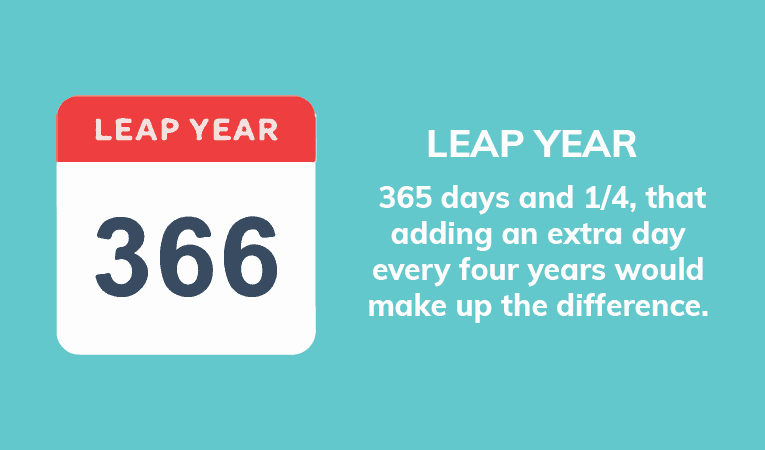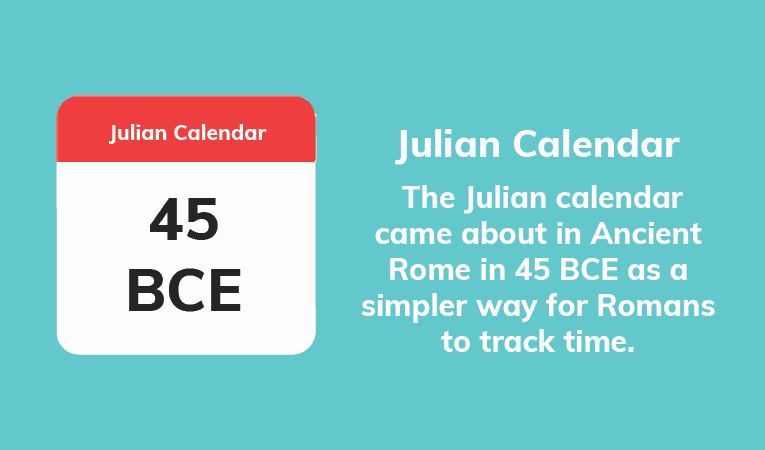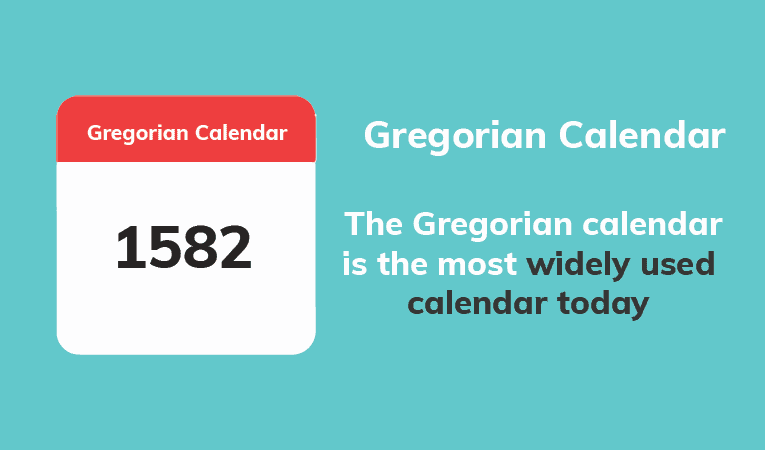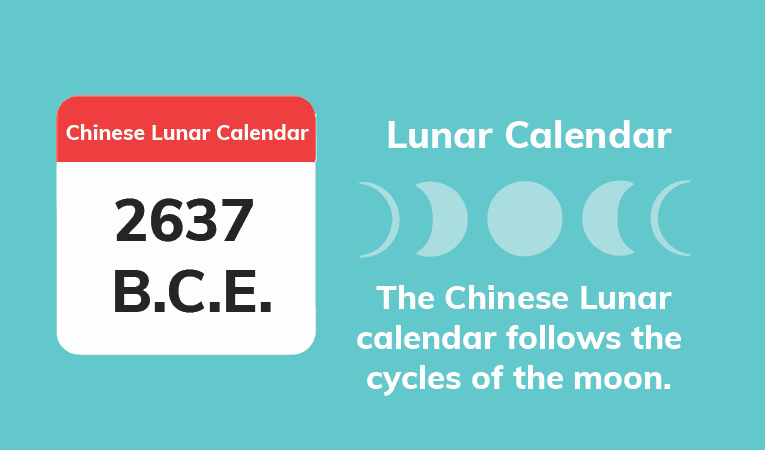Have you ever wondered what 52 weeks in months is? How about why February sometimes gains an extra day?
Ever since we invented the calendar in 8,000 BCE, tracking time has been essential to humans. Whether for farming purposes or to observe religious feasts, humans love counting the days.
But how exactly did the current calendar develop? Who the heck chose the number of weeks per month or the weeks in a year? Why is the Chinese New Year celebrated after January 1st?
In this article, we'll delve into the history of some of the most famous calendars. Read on to learn more about the ways we track time!
What Exactly Is 52 Weeks in Months?
Obviously, 52 weeks makes up 12 months, so there are 52 weeks in a year. Since each week has 7 days, that would mean there are 364 days in a year, right?
Except we all know that a year has 365 days in it, so what gives? To put it simply, there are differences between a solar year — also called the astronomical year — and a calendar year.
A solar year is the number of days that it takes for a planet to revolve around the sun. Every planet in our solar system has a different length of days in a year — a Martian year is 687 days, and a year on Neptune is equal to 165 Earth years!
Ancient humans calculated that it took 365 and 1/4 days to revolve around the sun, and they came pretty close to the actual total — 365 days, five hours, 48 minutes, and 46 seconds. To make up for that extra time, they added a full day every four years (aka, a leap year.)
So every month has between 30 or 31 days (with the exception of February) and the year is made up of 52 weeks and one extra day, to match our solar year to our calendar year.
What Is a Leap Year?
The leap year was first introduced in Roman times and is still used to track time to this day. As stated above, a solar year isn't an even number of days. It takes a little bit longer than 365 exact days for the Earth to orbit the sun.
To make up for this, ancient astronomers created a leap year. Since they believed that the solar year had 365 days and 1/4, that adding an extra day every four years would make up the difference.
And while this may seem like a negligible difference, those extra hours can add up and throw the entire calendar out of whack. If we didn't account for it with leap years and other adjustments, our calendar year wouldn't match the solar year and we could be celebrating the winter solstice in the fall.
All About the Julian Calendar
The Julian calendar came about in Ancient Rome in 45 BCE as a simpler way for Romans to track time. Before the Julian Calendar, people used the Roman calendar.
The Roman calendar based everything on the phases of the moon. These lunar cycles, lasting four weeks, are the reasons we have months. We also get quite a few of our months names from the Roman calendar — January comes from "Ianuarius" and March comes from "Martius," to name a few. September actually means "seventh month," which is a holdover from those early Roman days, when there were only ten months.
The Roman calendar didn't include leap years and was about ten days shorter than a solar year. So in order to keep things in sync with the seasons, they added an entire month every couple of years.
One of the problems with this Roman calendar was that elected officials in Rome decided when to add this leap month. That meant that the pontifex maximus, or the highest priest in the Roman religion, could abuse this power to extend his term.
Julius Caesar — yes, that Julius Caesar! — ordered a new calendar configured when he became the pontifex maximus. He worked with an astronomer named Sosigenes to create a new calendar that eliminated the leap month.
The Julian calendar is based on the solar year, not lunar cycles. The calendar year became 365 days, with a leap month every four years to compensate for the extra couple of hours each year.
It also established that the leap year would add an extra day to the month of February. Some religions still follow the Julian calendar to this day, and it bears striking similarities to our modern calendar.
All About the Gregorian Calendar
The Gregorian calendar is the most widely used calendar today and is also referred to as the Western or Christian calendar. It reformed the Julian calendar system instead of completely overhauling it.
In 1582, problems with the Julian calendar became apparent. Since it was originally believed that the solar year was 365.25 days, they had a leap year every four years to make up the difference. But the solar year is slightly longer than that, and those extra hours added up over the centuries.
Solstices and equinoxes no longer lined up with their accompanying holidays, like the Christian celebration of Easter. To fix this, the Catholic Pope introduced new rules to calculate leap years.
Instead of being every four years without fail, a leap year now must fall on a year that's divisible by 400. The year 2000 was a leap year because 2000 can be evenly divided by 400. But 100 years earlier, the leap year was skipped because 1900 cannot be evenly divided by four.
This new rule made the calculations much more accurate than the Julian calendar, and it was quickly adopted by Catholics worldwide in the 16th century. Non-Catholic Christians, however, needed a little more convincing.
Protestant countries, like England and early America, didn't make the switch to the Gregorian calendar until 200 years later! And Orthodox churches, like Eastern or Russian Orthodox, still follow the Julian calendar for religious purposes.
The Chinese Lunar Calendar
While the Chinese government has officially adopted the Gregorian calendar for official business, the traditional Chinese Lunar calendar is still culturally important. It is also called the Chinese Zodiac calendar, the Yin calendar, or the Xia calendar.
Instead of calculating the year based on the solar year, or the amount of time it takes to orbit the sun, the Chinese Lunar calendar follows the cycles of the moon.
Like the Roman calendar, the Chinese Lunar calendar will occasionally add a leap month in order to resync with the seasons. The Lunar Calendar is also less rigid than the Gregorian calendar when it comes to particular dates.
While the Gregorian calendar begins without fail on the first of January every year, the beginning of the Chinese Lunar calendar depends on that year's particular lunar and solar cycles. The month that begins the nearest to the Spring Equinox is the first month of the year, and that might change annually.
Another interesting aspect of the Chinese Lunar calendar is its inclusion of the Chinese Zodiac. While we may be familiar with the astrological zodiac signs that correspond to months, the Chinese Zodiac corresponds to years. Each year has its own zodiac sign — this year, it's the Ox.
The Mayan Calendar — and the Mayan Apocalypse
The Mayan people were accomplished astronomers and timekeepers and kept multiple calendars to track the passing of the years. They believed that time wasn't linear, aka it starts at one point and continues from there in a line, but that it was a cycle.
The Mayan calendar is made up of two distinct calendars that work in tandem. The Haab is the civil calendar that corresponds with the solar year (365 days) and the Tzolkin is a sacred calendar made up of 260 days. These work together to make up something known as the Calendar Round, which worked in cycles of 52 years.
The Mayans had another calendar, called the Long Count calendar. This particular calendar gained notoriety for predicting the end of the world.
The Long Count calendar is a massive calendar that counts a 2.8 million day cycle. It begins on August 11, 3114 BCE. And it ended, famously, on December 12, 2012.
The Mayans believed that their Long Count calendar marked a cycle that would cause the universe to reset itself at the end, which caused the modern public to jump to wild conclusions. There was a massive panic counting down to the end of 2012, but of course, the Earth continued to spin.
In 2011, Wandering Wolf, a Mayan Grand Elder, described that everyone completely misinterpreted Mayan belief. He described that the Mayans didn't think that the world would end, just that it would enter a new era. A brand new 2.8 million day cycle, full of new ideas and enlightenment.
Instead of December 2012 bringing the apocalypse, it ushered in a whole new era of humanity — a cause for celebration, not panic.
The Importance of Calendars
Ever since the dawn of time, humans have been fascinated with the passage of time. They knew it was important to mark celebrations, and we continue that tradition today.
Every birthday, every anniversary, every excited first snowfall of the season is a testament to our love of time.
So keep on counting the days, no matter which calendar you use!
Now that you know what 52 weeks in months is, be sure to browse our other blog posts for more interesting information.




